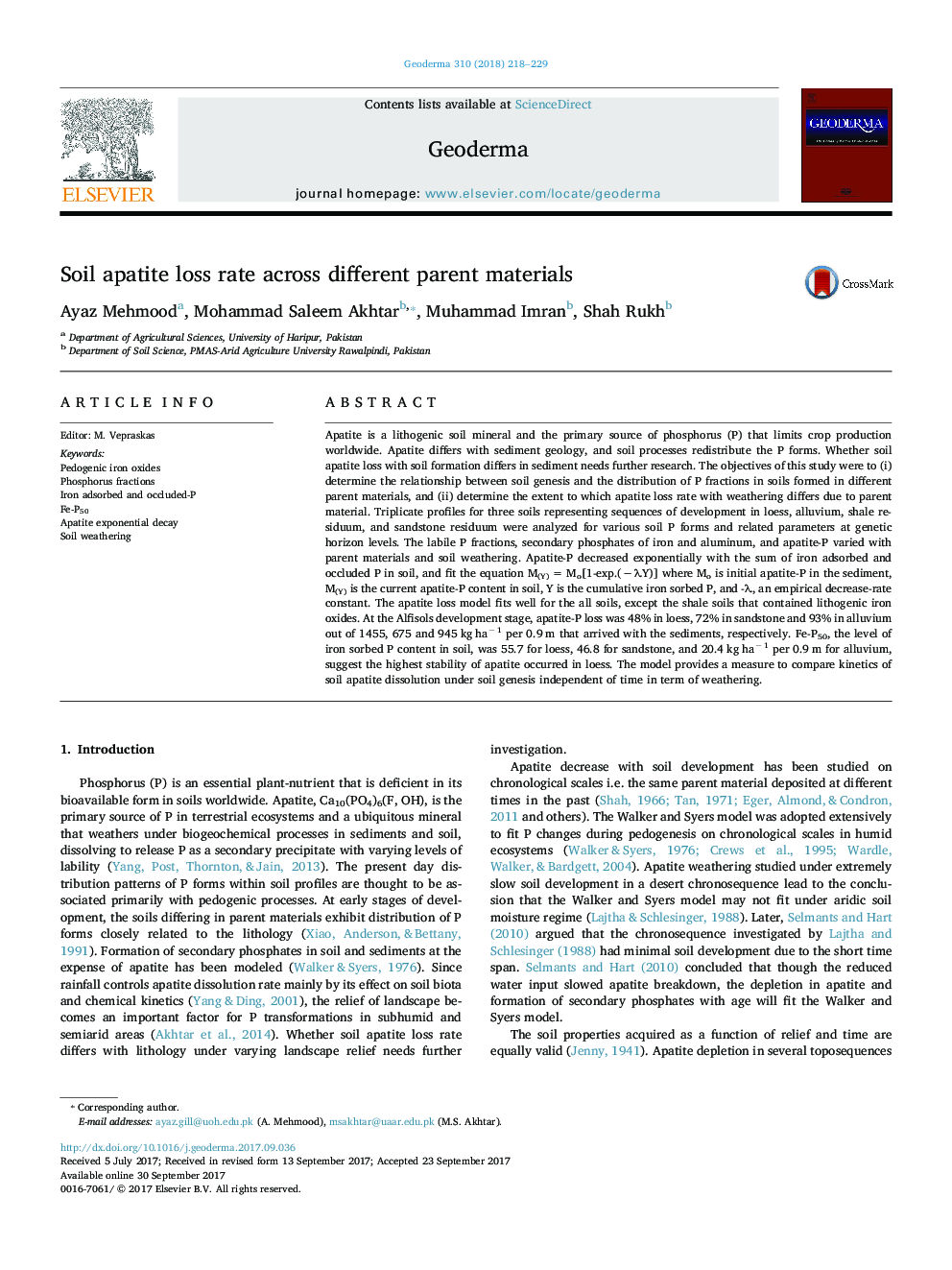| کد مقاله | کد نشریه | سال انتشار | مقاله انگلیسی | نسخه تمام متن |
|---|---|---|---|---|
| 5770376 | 1629407 | 2018 | 12 صفحه PDF | دانلود رایگان |
- A model for soil P transformation independent of time scale has been presented.
- M(Y) = Mo[1-exp.(â λY)] where M(Y) soil apatite-P, Mo apatite-P in sediments, Y iron oxides P, â λ, constant
- Model fit well for the soils except shale soils due to violating assumptions.
- Apatite stability followed the trend loess > sandstone > alluvium
Apatite is a lithogenic soil mineral and the primary source of phosphorus (P) that limits crop production worldwide. Apatite differs with sediment geology, and soil processes redistribute the P forms. Whether soil apatite loss with soil formation differs in sediment needs further research. The objectives of this study were to (i) determine the relationship between soil genesis and the distribution of P fractions in soils formed in different parent materials, and (ii) determine the extent to which apatite loss rate with weathering differs due to parent material. Triplicate profiles for three soils representing sequences of development in loess, alluvium, shale residuum, and sandstone residuum were analyzed for various soil P forms and related parameters at genetic horizon levels. The labile P fractions, secondary phosphates of iron and aluminum, and apatite-P varied with parent materials and soil weathering. Apatite-P decreased exponentially with the sum of iron adsorbed and occluded P in soil, and fit the equation M(Y) = Mo[1-exp.(â λY)] where Mo is initial apatite-P in the sediment, M(Y) is the current apatite-P content in soil, Y is the cumulative iron sorbed P, and -λ, an empirical decrease-rate constant. The apatite loss model fits well for the all soils, except the shale soils that contained lithogenic iron oxides. At the Alfisols development stage, apatite-P loss was 48% in loess, 72% in sandstone and 93% in alluvium out of 1455, 675 and 945 kg haâ 1 per 0.9 m that arrived with the sediments, respectively. Fe-P50, the level of iron sorbed P content in soil, was 55.7 for loess, 46.8 for sandstone, and 20.4 kg haâ 1 per 0.9 m for alluvium, suggest the highest stability of apatite occurred in loess. The model provides a measure to compare kinetics of soil apatite dissolution under soil genesis independent of time in term of weathering.
Journal: Geoderma - Volume 310, 15 January 2018, Pages 218-229
